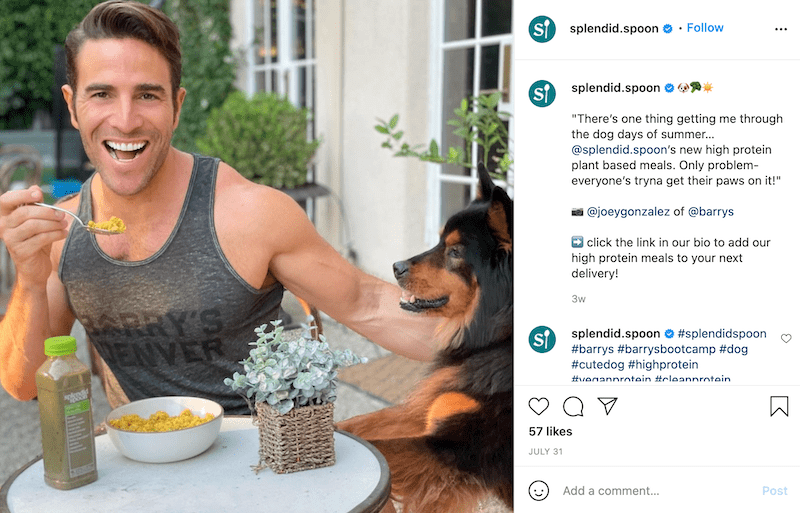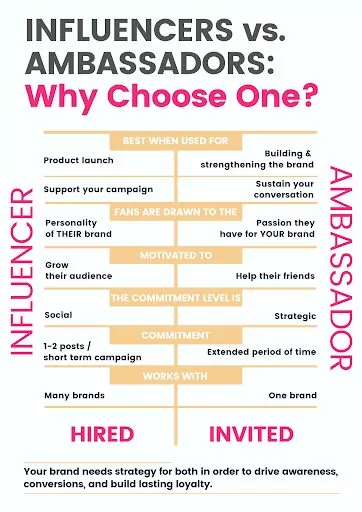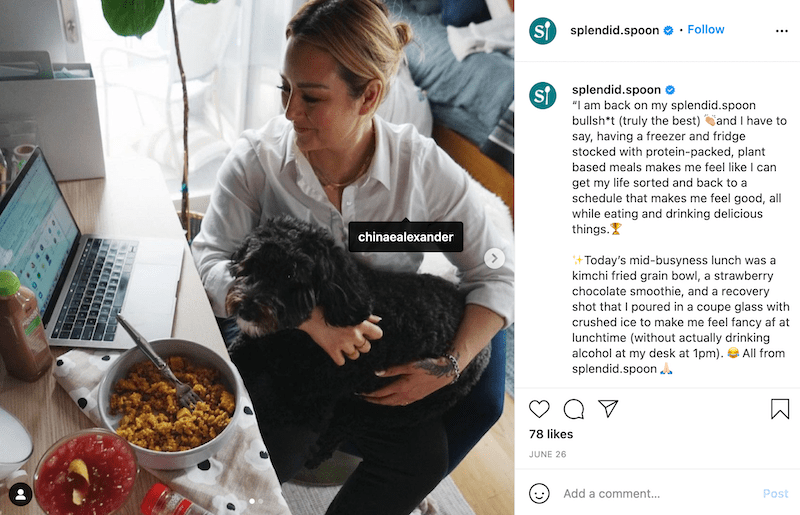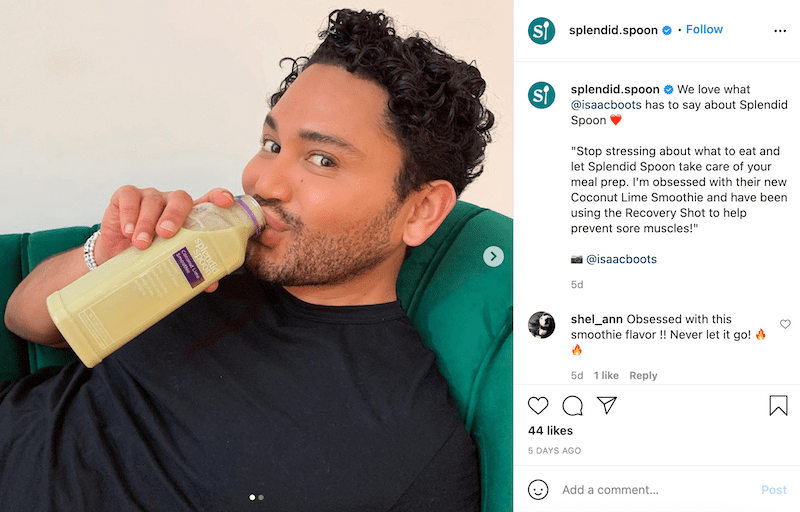
Influencer marketing and brand ambassador marketing are two effective strategies to drive awareness and sales in a trustworthy way.
With customer behavior constantly evolving, and consumer trust in traditional advertising rapidly dropping, these 2 types of word of mouth marketing have emerged as the most reliable and cost effective ways for a brand to connect with consumers.
But to a lot of people, it’s not clear what are the differences between brand ambassadors and influencers.
And it’s understandable, the definitions can be a little vague. However, as you will find out in this article, they are basically the same thing.
The main differences come from the nature of the relationship and the way a brand manages them.
Influencers are generally campaign based whereas an ambassador may be an influencer BUT they are engaged over a longer period of time with the brand.
In this article, we will explain the differences between managing influencers and brand ambassadors and how you can use both for a complete strategy.
What is an influencer?
Influencers are generally defined as having a social following that is connected to their “personality” on one or many digital channels. But that is not the complete story.
An influencer is someone who has the ability to affect people’s decisions based on the audience’s opinions of him or her.
So, a large follower count is not necessary to be considered an influencer. In fact, there are 6 types of influencers:
- Nano influencers: 1,000 – 10,000 followers
- Micro influencers: 10,000 – 50,000 followers
- Mid-tier influencers: 50,000 – 500,000 followers
- Macro influencers: 500,000 – 1 million followers
- Mega influencers: 1 million – 5 million followers
- Celebrity influencers: Over 5 million followers
Influencers are all about their reach and connection with their audience. The type of influencer you should choose for your strategy will depend on your marketing goals.
What is a brand ambassador?

A brand ambassador is a person who is hired to represent a brand in a positive light and by doing so increase brand awareness and sales.
This definition might seem a little vague, but that’s because basically anyone can be a brand ambassador if a company thinks it’s appropriate for their strategy.
So technically, customers, employees, students, advocates, affiliates, and influencers in general can all be brand ambassadors if the brand hires them for marketing purposes.
The main idea is that people trust word of mouth recommendations more than any type of advertising.
So, people with any following who love a brand are valuable because their recommendations go a long way.
According to Nielson, 92% of consumers trust a recommendation from a peer, friend, or family member more than they trust a recommendation from a brand.
Brand ambassador programs open the door for organizations to collaborate with big and small people to spread the love for the brand.
So what are the differences between an influencer marketing program and a brand ambassador program?
How influencer marketing works
In the most basic way, influencer marketing works this way:
A company pays an influencer to endorse their products on social media.
The partnerships that influencers make with brands are usually online only and campaign based, meaning they are short term and only require the influencers to make 1-2 pieces of content.
This strategy has been proven to be extremely fruitful especially for the product launch stage where awareness is the main goal, as this form of marketing is able to quickly generate widespread, mainstream knowledge of a product.
A 2019 Edelman report shows that 63% of consumers trust what influencers have to say about products “much more” than what brands say about themselves, which truly demonstrates how consumers’ opinion of traditional advertising is shifting.
With this in mind, brands should continue to utilize a curated group of influencers to promote their products, due to the “top of the funnel” awareness that they are proven to be able to generate.
How ambassador marketing works
On the other hand, brand ambassador programs focus on long-term partnerships with multiple ambassadors at the same time (even hundreds).
Brand ambassadors are tasked with online activities such as creating social media content, just like in an influencer marketing campaign.
But they can also participate in offline activities. This depends on the brand’s goals.
Technically, affiliate programs and referral programs can also be considered as brand ambassador programs because you are collaborating with people on a long-term basis to drive word of mouth recommendations.
With this in mind, ambassadors can create content on your schedule or on their own schedule. This will depend on the compensation method you choose and guidelines.
For example, if you use commissions, ambassadors will be motivated to constantly create new content.
Or you can also pay per post or with free products and ask them to create 1-2 pieces of content for the month.
As you can see, ambassador marketing is just influencer marketing but on a long-term basis and without a strict online pay-per-post format.
Differences between brand ambassadors and influencers

While influencers are able to generate awareness about a brand’s product very quickly, brand ambassadors are able to generate actual conversions and keep the conversation about your brand going.
A key differentiator when hiring influencers and brand ambassadors is their connection to the brand.
Ambassadors are passionate about the brand they represent, and are motivated to put the products they love into the hands of the people they know.
They serve as advocates, driving growth organically on and offline.
This enables brands to build and strengthen trust through their ambassadors, who bring a more genuine and effective angle to widespread word of mouth marketing.
In addition, brand ambassadors usually just work with 1 brand they love, while influencers can work with as many brands as they want at any moment.
How successful brands use influencers and brand ambassadors
To understand how you can effectively partner with influencers and brand ambassadors to drive awareness and buzz around your brand, let’s take a look at the plant-based meal delivery service, Splendid Spoon.
According to Splendid Spoon’s founder and Co-CEO Nicole Centeno, they currently collaborate with over 200 brand ambassadors and with 2-5 paid influencers monthly.
Why? For a couple of reasons.
The brand ambassadors Splendid Spoon works with are true brand fans that create consistent UGC (user generated content) and drive brand buzz. In a way, UGC is basically online word of mouth recommendations.

But not only that, having a group of 200+ brand fans is a great opportunity to get valuable feedback and improve the company, which is exactly what Splendid Spoon does.
In addition to the brand ambassadors, influencer marketing campaigns help drive even more awareness to the service and help boost product launches.

Best influencer and brand ambassador strategy
As you can see from the example above, together, influencers and ambassadors can help brands more effectively achieve awareness, conversion, and loyalty goals.
When launching a new product, brands can use an influencer campaign to introduce the products to a broad audience of potential customers.
Once the product has launched, brands can then engage their brand ambassadors to sustain the conversation, generate even more buzz, and create more user generated content around the product.
This pairing of influencer personalities and ambassadors’ genuine passion for a brand, activated across multiple channels, enables brands to harness the power of word of mouth and deepen relationships with their brand community.
In order to achieve this at the fullest potential, brands should be using influencers and brand ambassadors together to maximize awareness and build greater consumer trust.
Using influencers and brand ambassadors together is also a great way to enhance your brand’s content strategy.
With the content that both groups are creating around your brand, whether through a specific campaign or a product review, marketing teams will gain access to an entire factory of user generated content.
Why choose one?
Both influencers and brand ambassadors have substantial value in today’s marketing landscape.
Their ability to significantly impact the way that new and existing customers view and interact with brands can’t be replicated by other forms of advertising.
Influencer campaigns and brand ambassador programs are able to help brands achieve far-reaching brand awareness while forming a genuine relationship between brands and consumers.
So, why not do both?



